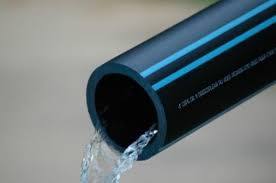Nov . 05, 2024 06:45 Back to list
column pipe for submersible pump product
Understanding Column Pipe for Submersible Pumps
Submersible pumps play a crucial role in various applications, from agricultural irrigation to municipal water supply systems. Among the key components of these pumps is the column pipe, which is vital for their efficient operation and longevity. This article will delve into the significance of column pipes in submersible pumps, exploring their design, material, and the factors influencing their performance.
What is a Column Pipe?
A column pipe is a vertical pipe that connects the submersible pump, usually installed underwater, to the surface where the water is discharged. It serves multiple purposes it allows the movement of water from the pump to the surface, houses the pump's electrical cables, and provides structural support for the entire setup. The diameter and length of the column pipe can vary based on the pump's specifications and the application requirements.
Importance of Material Choices
The choice of material for column pipes is critical, affecting both performance and durability. Common materials include
1. Stainless Steel This material offers high corrosion resistance and is ideal for applications where water may contain corrosive agents. Stainless steel column pipes are often used in municipal and industrial settings due to their durability.
2. PVC Polyvinyl chloride (PVC) is a lightweight, cost-effective option for column pipes. While it may not be as durable as stainless steel, it functions adequately in less aggressive environments. PVC pipes are commonly used for agricultural irrigation systems.
3. HDPE High-density polyethylene (HDPE) is another popular choice, celebrated for its resistance to chemical wear and flexibility. HDPE column pipes are often used in situations where bending is necessary due to terrain variance.
Choosing the right material hinges on factors like the water's chemical composition, the required pipe length, and the operating pressure
. Proper material selection can significantly extend the lifespan of the pump system and reduce maintenance costs.Design Considerations
column pipe for submersible pump product

When designing a column pipe, various factors should be considered
1. Diameter The diameter of the column pipe needs to match the pump’s discharge size to prevent flow restrictions. Oversized or undersized pipes can lead to inefficient pump performance and increased energy consumption.
2. Length The length of the column pipe must accommodate the depth where the pump is installed and any elevation change necessary to lift water to the surface. Longer pipes can lead to additional friction losses, necessitating a more powerful pump.
3. Reinforcement In areas with potential soil movement or other external stresses, reinforcing the column pipe can ensure its integrity and prevent failures over time. This can involve using thicker materials or adding external supports.
Performance Factors
The performance of a submersible pump system is influenced by the column pipe in several ways
- Friction Loss Longer and narrower pipes can result in higher friction losses, reducing the efficiency of the pump. It’s essential to calculate the expected flow rates and pipe dimensions to minimize these losses.
- Vibration and Stability A properly secured and dimensioned column pipe will minimize vibrations caused by the pump operation. Excessive vibrations can lead to mechanical failures and decreased reliability.
- Thermal Expansion Depending on the installed environment and water temperature, thermal expansion or contraction may occur. Adequate allowances should be made in the column pipe design to accommodate these changes.
Conclusion
In conclusion, the column pipe is a fundamental element of any submersible pump system. Its design and material choice significantly affect the system's efficiency, reliability, and operational costs. By understanding the intricacies of column pipes, users can make informed decisions that enhance the overall performance of their submersible pump systems. Whether for agricultural, industrial, or municipal use, investing in the right column pipe can lead to long-term benefits, including improved water delivery and reduced maintenance needs.
-
High-Quality PVC Borehole Pipes Durable & Versatile Pipe Solutions
NewsJul.08,2025
-
High-Quality PVC Perforated Pipes for Efficient Drainage Leading Manufacturers & Factories
NewsJul.08,2025
-
High-Quality PVC Borehole Pipes Durable Pipe Solutions by Leading Manufacturer
NewsJul.08,2025
-
High-Quality PVC Borehole Pipes Reliable PVC Pipe Manufacturer Solutions
NewsJul.07,2025
-
High-Quality UPVC Drain Pipes Durable HDPE & Drain Pipe Solutions
NewsJul.07,2025
-
High-Quality Conduit Pipes & HDPE Conduit Fittings Manufacturer Reliable Factory Supply
NewsJul.06,2025

